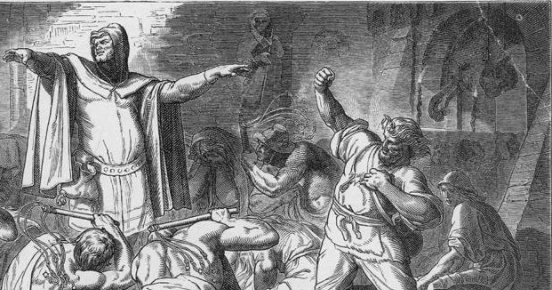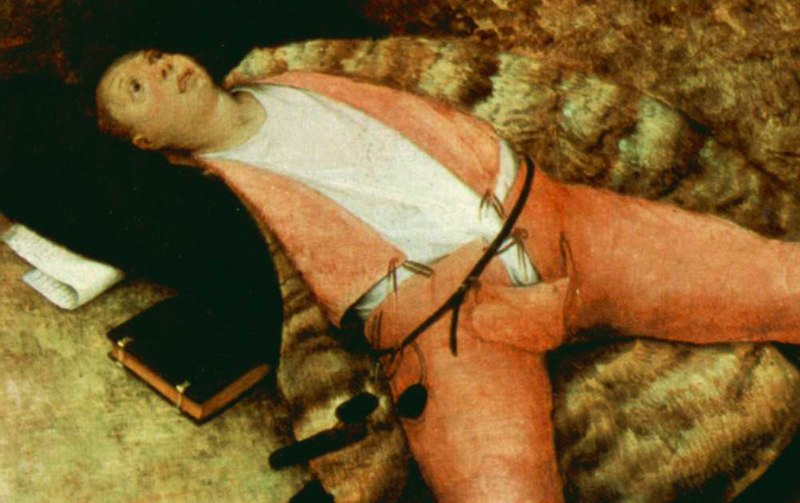On 23 March 1405, William Holt, esquire, of Sussex took sanctuary in the church of St. Martin in the Fields (now on Trafalgar Square). He confessed to the coroner that he was an accessory to a decade-old homicide. The coroner, however, was suspicious about the long time lag: he thought Holt had already abjured forContinue reading “Escape from sanctuary”
Tag Archives: Aristocratic violence
Escape from Strand Church
On 5 November 1410, William Orwell took sanctuary at the church of St. Mary le Strand for “divers felonies”; after he confessed to the coroner, the townspeople of Westminster were set to watch over him. They guarded him for two days (perhaps wondering when he was actually going to abjure and get out of theirContinue reading “Escape from Strand Church”
Celebrity knight flees to sanctuary
In 1411, a minor celebrity knight, Sir John Prendergast, fled to Westminster Abbey for sanctuary. Retainer of John Beaufort, earl of Somerset, around 1400 Prendergast had been the recipient of a famous (but unfulfilled) tournament challenge from an Aragonese knight named Michel d’Oris, the challenge subsequently becoming a model of chivalric glamour even though theContinue reading “Celebrity knight flees to sanctuary”
The Felonious MP
In 1414, a former Member of Parliament took sanctuary for homicide, one of a number of MPs who sought asylum for their felonies. If a criminal politician seems just a bit too relevant, consider also that he’d likely originally sought public office a decade before in order to avoid charges in an earlier crime. Let’sContinue reading “The Felonious MP”
Gentry violence in Lincolnshire, 1427
In 1427 a gentleman in his 50s assembled a small private army to ambush an enemy. The enemy was killed in the affray and the gentleman ran to sanctuary – but then later was acquitted of the charge. He went on (of course) to be an MP and sheriff. On 10 August 1427, a coroner’sContinue reading “Gentry violence in Lincolnshire, 1427”
The curious case of the Welsh knight
Another felony-inventor, this time a curious case of a Welsh knight who took sanctuary for an already-pardoned killing. His chequered career – including dabbling in Lollard revolts – suggests he was quite a guy. In London in 1431, Sir Nicholas Conway “of Caernarfon in parts of Wales,” recently returned from the war in France, killedContinue reading “The curious case of the Welsh knight”
Murder-for-hire
On 25 April 1446, three men of Geddington, Northamptonshire – two yeomen and a labourer – lay in wait to attack one William Shirwode. According to the indictment, the two yeomen attacked Shirwode with swords drawn, and the labourer, William Campyon, with a pitchfork. It was Campyon who struck the fatal blow, hitting Shirwode onContinue reading “Murder-for-hire”
A dead Welshman and aristocratic impunity
This case has a few complications, but has a number of features common to homicide indictments in the early Tudor period: a group of men set upon someone in what looks like an assassination; though the homicide took place in the London area those involved were from the Welsh marches and the victim had aContinue reading “A dead Welshman and aristocratic impunity”
The “Blessed” Adrian Fortescue, violent thug and sanctuary seeker
Sir Adrian Fortescue was amongst a number of aristocrats in Henry VIII’s reign who took advantage of sanctuary to get out of sticky situations. This is one episode in a lifetime of falling in and out of trouble, balanced several centuries later, perhaps, by a (rather questionable) beatification as a Catholic martyr. At 17 Fortescue’sContinue reading “The “Blessed” Adrian Fortescue, violent thug and sanctuary seeker”
The Raynsfords and their local sanctuary: aristocratic criminality, Tudor-style
The Raynsfords, an important Essex gentry family, patronized St John’s abbey in Colchester; this was in itself unremarkable, as pious gentlefolk often donated to their favourite local monastery. The monks of St John’s offered the Raynsfords more than prayers for departed ancestors, however: they also provided asylum when the Raynsfords themselves and their retainers committedContinue reading “The Raynsfords and their local sanctuary: aristocratic criminality, Tudor-style”









